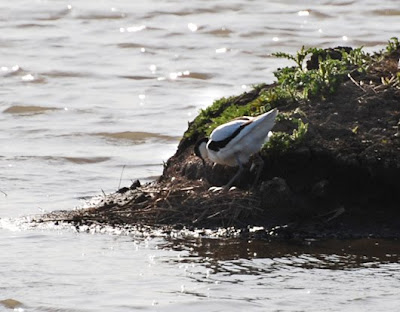Occasional observations of fauna & flora around Leeds, Yorkshire & beyond
Friday, 28 May 2010
Blacktoft Sands
Tuesday, 25 May 2010
St Chad's Churchyard, Headingley

Here's a fine description of the flowerheads from Botanical.com "The sepals are brown and paper-like in texture and give the head its peculiar rusty look. The corolla is very small and inconspicuous, tubed and having four spreading lobes. The stamens, four in number, are the most noticeable feature, their slender white filaments and pale yellow anthers forming a conspicuous ring around the flower-head. "


Monday, 24 May 2010
Adel Churchyard





Sunday, 23 May 2010
Rodley Nature Reserve


We stopped off for a cold drink at the Vistors Centre and marvelled at the webcam stream from the Blue Tit box. I think there were eight or nine babies, an adult appearing every few minutes, the volunteers reckon they'll have fledged by mid next week. From inside the Visitors Cente we could see this Crow sat on a gatepost open beaked in an attempt to cool down.
By the Dragonfly Ponds Large Red Damselflies were busily going about their business. 


And here a ropey pic of a blue damselfly, perhaps a male Azure Damselfly? Slightly different to a Common Blue in which abdominal segments 8 and 9 are all blue. Any thoughts appreciated.
Butterfly sightings included 3 Green Veined White, 3 Small Tortoiseshell, 4 Speckled Wood, 3 Orange Tip, 2 Peacock, this one here sat close winged on a fence post, plus 8 unidentified Whites on the wing.
From the lookout point overlooking the Wet Grassland we could see this Roe Deer on the opposite bank, it stood for a minute before bounding over the verge towards the riverbank, providing us with our first sighting of a Roe Deer at Rodley, thank you very much.
Wednesday, 19 May 2010
Local Leeds sightings
Tuesday, 18 May 2010
Rodley Nature Reserve
Refreshes and refuelled I made my way up to the meadow, I followed the mown path up to the far end of the field and sat for a while to admire the view. I became engrossed in the thin stemmed flowering perennial grasses with densely packed spikelets Common Timothy (Phleum pratense) or Meadow Foxtail (Alopecurus pratensis) perhaps?

Looking down over the reserve I couldn't help but hear these three Mute Swans raise themselves from the wetland and head off downstream together.

Here you can see the stamens more clearly, grey at first, turning brown with time, maturing from the top of the spikelet to the bottom.



































